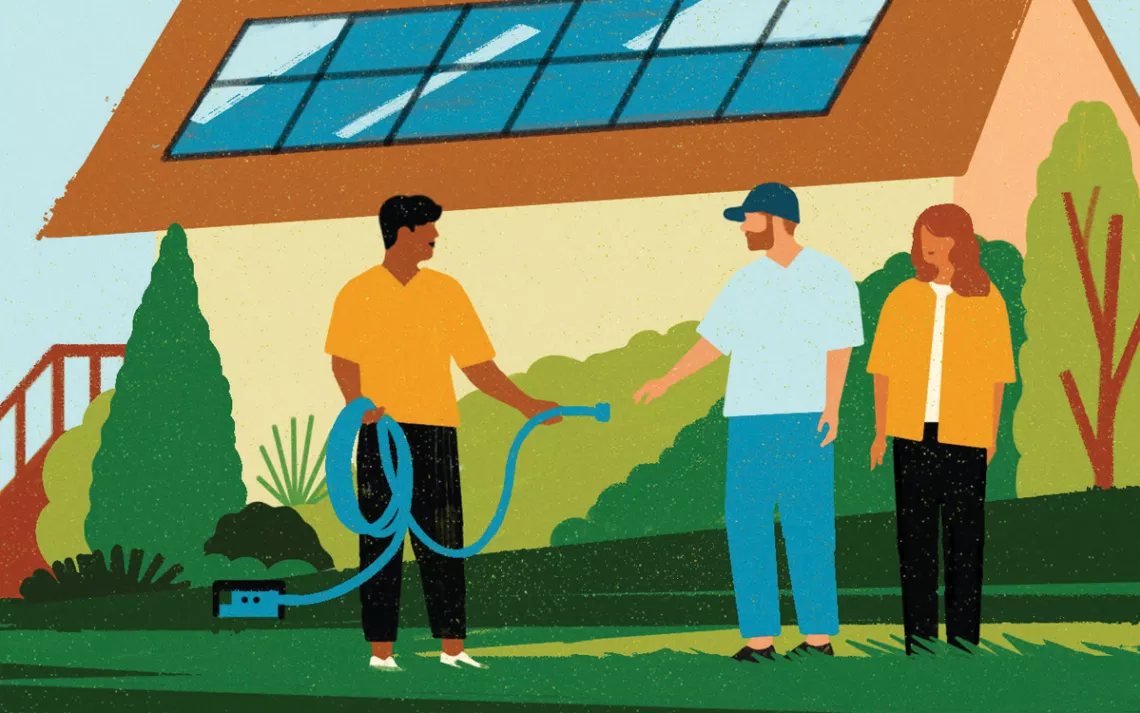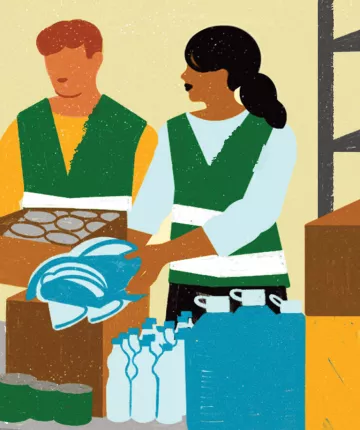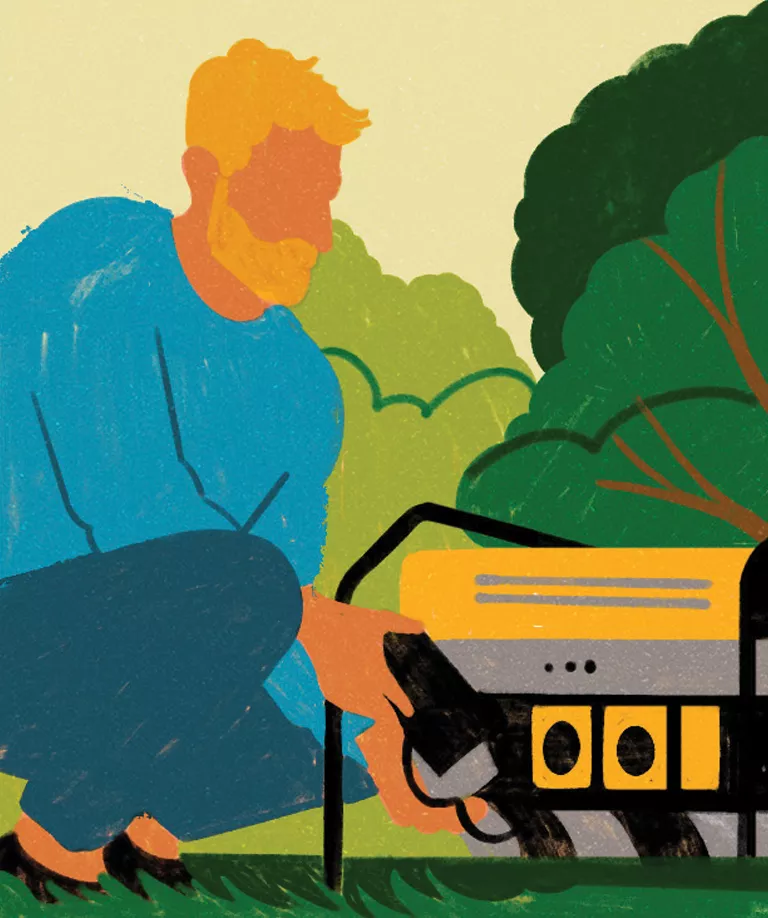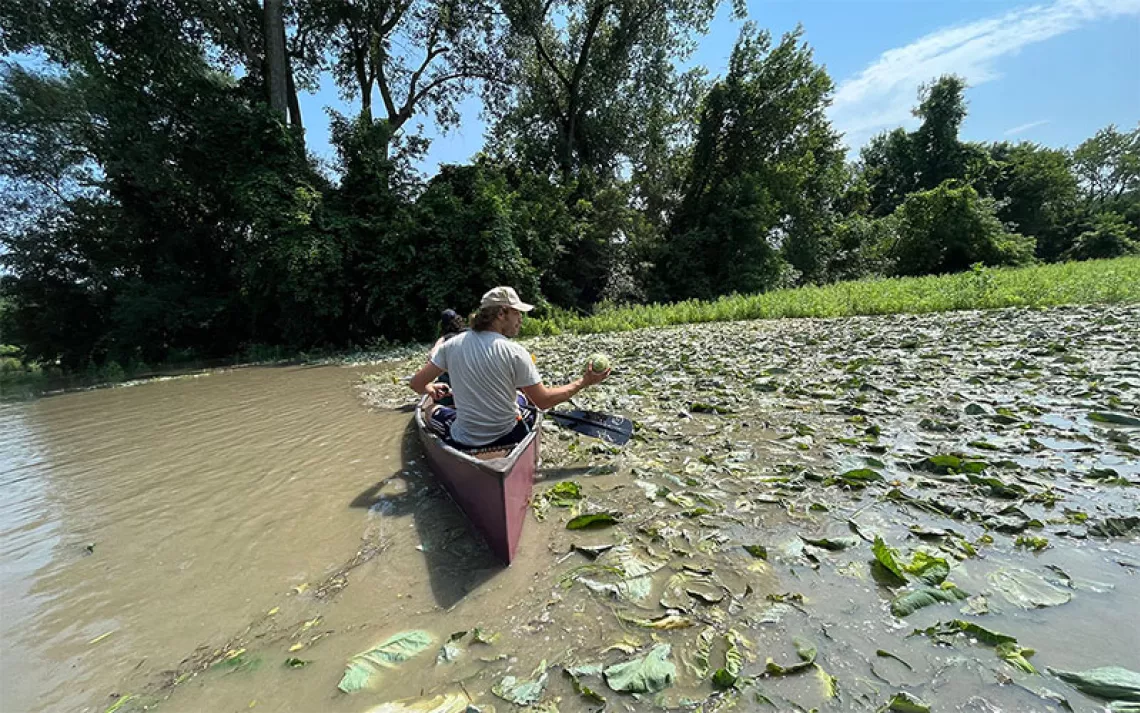How to Prepare for Extreme Weather With Community-Powered Resilience
Here are steps anyone can take to tap into the great power of one another

Winds soared across the meadows of my rural Montana community last January as temperatures dipped into the 20s. The winter storm created a demand for electricity that far exceeded our utility’s supply. Thousands of residents were snowed in without power for hours, some for more than a day. Such power outages are likely to become more common as the climate crisis amplifies weather extremes. In 2021, a historic freeze in Texas brought rolling blackouts after gas plants shut down. One year later, a bomb cyclone called Winter Storm Elliott crippled energy systems along the East Coast with blizzards and record cold temperatures. As more climate change emergencies loom, we’d all be wise to take a few cues from my off-grid neighbors and fortify ourselves—and our communities—with resiliency strategies that take advantage of renewable sources of power. And while we’re at it, let’s tap into that other traditional power source: each other.
Mutual Aid and Collective Action
Don’t wait for an extreme storm, heat wave, hurricane, or flood to finally give you an excuse to meet your neighbors. The best support system for a crisis in your community is community itself. Forge connections the old-fashioned way: Walk over and knock on doors to introduce yourself. If you want to set the tone, arrive with an offering they can’t refuse (homemade brownies, anyone?). Exchange contact information. Nothing beats face-to-face contact: a wave, a handshake, a smile. You can also lay the groundwork for grassroots support via platforms like Facebook and Nextdoor.
Think beyond canned chili. Dehydrate, can, and vacuum-seal good, solid meals ahead of time.
A Broad Base
Challenge local nonprofits, service groups, and faith-based organizations and community centers to commit to mobilizing volunteers, collecting donations, and distributing food, water, and blankets in an emergency. (Mylar blankets and lightweight tarps can help bodies retain heat in survival situations.) Where I live in Potomac, the Blackfoot Home and Community Club is hosting a brainstorming session this fall to share resources, skills, and information for the next climate disaster. We plan to collaboratively identify potential risks, develop emergency plans, and pool resources.
Evacuation Plans
If staying put poses significant risk to life or property—and if the duration or severity of a power outage isn’t apparent—it’s best to evacuate. Establish evacuation plans with vulnerable community members before emergency strikes—including designating meeting points and gathering emergency contacts and essential supplies. Create a community alert system to guide evacuation decisions during power outages and let folks who may not have friends or family outside the affected area know where to find emergency shelters (like hotels with backup generators). Evacuation doesn’t have to mean going far. Last year in Potomac, people piled into a school to shower, and a local mom used her cargo van to shuttle neighbors from their homes in the mountains down to the community bar and grill.

What to Keep on Hand
Good news, camping enthusiasts—you’ve been training for power outages your whole life. You know the basics to survive: food, water, and warmth. Keep an extra five gallons of drinking water on hand.
Especially if your household includes people with diabetes, pregnant women, or anyone whose life depends on what they eat, think beyond canned chili. Dehydrate, can, and vacuum-seal good, solid meals ahead of time. “Prepare a backstop of meals that’ll give you energy and keep your spirits up in the event of an extended grid failure. It’s not just about whether you can survive; it’s about doing so in a way that doesn’t come with a traumatic cost,” says Cheyanna Rondeau, owner of Mountain Maven Company, which provides women with off-grid living and outdoor survival education.
Camp stoves, whether lightweight backcountry models or larger propane options, provide a reliable way to cook and, with proper ventilation, can be used indoors safely.
Keep the lights on via some combination of oil lamps, candles, headlamps, and solar lights/USB chargers. “We strap a headlamp onto a gallon jug of water to light up rooms for our animals,” says Jessi Knudsen Castenada, who runs an exotic animal rescue in Montana.
Other Essentials
Some other items you might want to have on hand include a smart water-leak detector (designed to alert you of leaks via smartphone, even in the event of outages), rechargeable emergency LED lightbulbs, a hand pump for your water well, a solarpowered heating system for your water supply, a portable water filtration system, a battery-powered or hand-cranked flashlight and radio, a mobile shower pump, nonperishable food items that are high in calories and nutrients (energy bars, jerky, nuts, and dried fruits), and, if you have a TV, a large outdoor antenna, so if the internet and cable go out, you can keep an eye on the news and weather throughout the crisis.

Generators 101
Generators range from pull-start, hand-cranked portable devices that can charge your phone (starting around $50) to whole-home standby systems ($6,000 to $11,000, on average). Some companies make solar-powered options for power by day. There are even electric vehicles that can serve as generators and power your home in a blackout.
Standby generators are installed outside and connected to a long-term fuel supply, designed to turn on at the first sign of a power interruption. “You can even get generators that run off water power,” Rondeau says. “If you live near a flowing stream, it’ll provide endless energy as long as it’s not in the shade, where it’s more likely to freeze.”
Hacks to Deploy When the Lights Go Out in Winter
- Fill a bathtub with water to flush your toilet, to heat water on a gas stove, and to do dishes.
- Unplug everything. (When the electricity comes back, you don’t want the surge to blow out a computer.)
- Close off rooms and halls to keep heat more centralized.
- Turn on faucets to let water drip—about a drop per minute—thus alleviating pressure in your plumbing system so pipes don’t freeze and burst. Insulate any exposed pipes with foam or heat tape, especially in unheated areas like basements, attics, and crawl spaces.
- Open your cabinets (air can circulate and keep the pipes in the walls behind them warm), but close your garage doors (to prevent water supply lines from freezing). In the event a pipe still bursts, find your main water valve, and shut it off.
- Disconnect and drain outdoor hoses and irrigation systems to prevent water from freezing. (Ideally, you sealed any pipes’ leaks or cracks with insulation or caulking before winter set in.)
- Dig out a good book, and check on your neighbors.
 The Magazine of The Sierra Club
The Magazine of The Sierra Club



